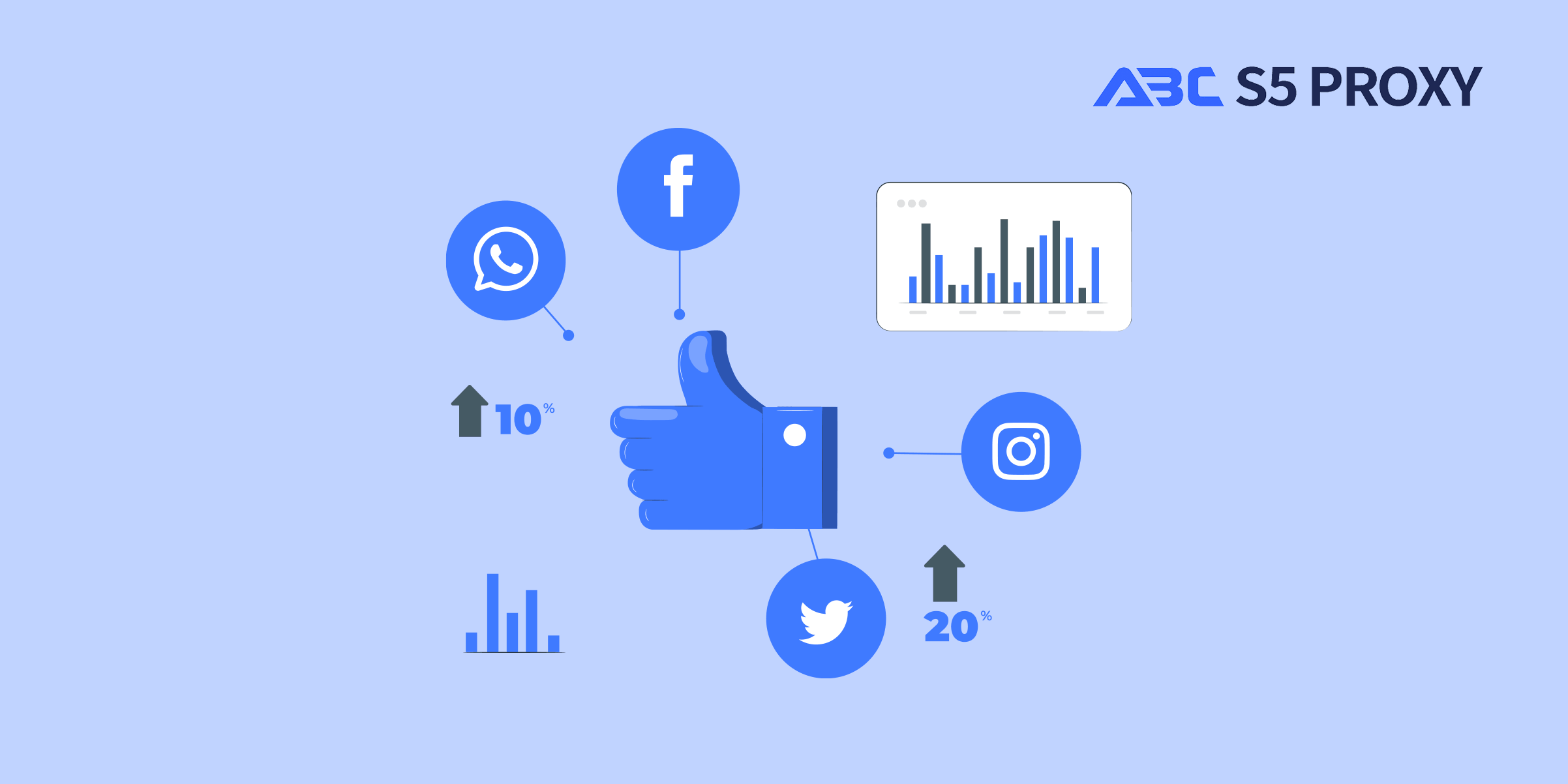Residential Proxies
Allowlisted 200M+ IPs from real ISP. Managed/obtained proxies via dashboard.

Proxies Services
Residential Proxies
Allowlisted 200M+ IPs from real ISP. Managed/obtained proxies via dashboard.
Residential (Socks5) Proxies
Over 200 million real IPs in 190+ locations,
Unlimited Residential Proxies
Unlimited use of IP and Traffic, AI Intelligent Rotating Residential Proxies
Static Residential proxies
Long-lasting dedicated proxy, non-rotating residential proxy
Dedicated Datacenter Proxies
Use stable, fast, and furious 700K+ datacenter IPs worldwide.
Mobile Proxies
Dive into a 10M+ ethically-sourced mobile lP pool with 160+ locations and 700+ ASNs.
Scrapers
Collection of public structured data from all websites
Proxies
Residential Proxies
Allowlisted 200M+ IPs from real ISP. Managed/obtained proxies via dashboard.
Starts from
$0.6/ GB
Residential (Socks5) Proxies
Over 200 million real IPs in 190+ locations,
Starts from
$0.045/ IP
Unlimited Residential Proxies
Unlimited use of IP and Traffic, AI Intelligent Rotating Residential Proxies
Starts from
$1816/ MONTH
Rotating ISP Proxies
ABCProxy's Rotating ISP Proxies guarantee long session time.
Starts from
$0.4/ GB
Static Residential proxies
Long-lasting dedicated proxy, non-rotating residential proxy
Starts from
$4.5/MONTH
Dedicated Datacenter Proxies
Use stable, fast, and furious 700K+ datacenter IPs worldwide.
Starts from
$4.5/MONTH
Mobile Proxies
Allowlisted 200M+ IPs from real ISP. Managed/obtained proxies via dashboard.
Starts from
$1.2/ GB
Scrapers
Web Unblocker
Simulate real user behavior to over-come anti-bot detection
Starts from
$1.2/GB
Serp API
Get real-time search engine data With SERP API
Starts from
$0.3/1K results
Video Downloader
Fully automated download of video and audio data.
Starts from
$0.07/GB
Scraping Browser
Scale scraping browsers with built-inunblocking and hosting
Starts from
$2.5/GB
Documentation
All features, parameters, and integration details, backed by code samples in every coding language.
TOOLS
Resources
Addons
ABCProxy Extension for Chrome
Free Chrome proxy manager extension that works with any proxy provider.
ABCProxy Extension for Firefox
Free Firefox proxy manager extension that works with any proxy provider.
Proxy Manager
Manage all proxies using APM interface
Proxy Checker
Free online proxy checker analyzing health, type, and country.
Proxies
AI Developmen
Acquire large-scale multimodal web data for machine learning
Sales & E-commerce
Collect pricing data on every product acrossthe web to get and maintain a competitive advantage
Threat Intelligence
Get real-time data and access multiple geo-locations around the world.
Copyright Infringement Monitoring
Find and gather all the evidence to stop copyright infringements.
Social Media for Marketing
Dominate your industry space on social media with smarter campaigns, anticipate the next big trends
Travel Fare Aggregation
Get real-time data and access multiple geo-locations around the world.
By Use Case
English
繁體中文
Русский
Indonesia
Português
Español
بالعربية

Using Proxies for Competitive Analysis: A Comprehensive Guide
In the ever-evolving landscape of business and digital marketing, staying ahead of the competition is crucial for success. One powerful tool that enables companies to gain insights into their competitors' strategies and activities is the use of proxies. By leveraging proxies effectively, businesses can gather valuable data and intelligence to inform their own decision-making processes and stay ahead in the competitive race. In this blog post, we will delve into the ins and outs of using proxies for competitive analysis, discussing the benefits, best practices, and how to maximize the potential of this valuable tool.
Before we dive into how proxies can be used for competitive analysis, let's first establish a solid understanding of what proxies are and how they function. In simple terms, a proxy acts as an intermediary between your device and the internet. When you connect to the internet through a proxy server, your IP address is masked, and your online activities are routed through the proxy server, providing you with anonymity and privacy. This can be particularly useful for competitive analysis, as it allows you to access competitor websites and gather data without revealing your identity.
There are several key benefits to using proxies for competitive analysis:
1. **Anonymity and Privacy**: Proxies allow you to browse the web and gather data without disclosing your identity, giving you the freedom to conduct research discreetly.
2. **Access to Geographically Restricted Data**: With proxies, you can access region-locked content and websites that may not be available in your location, providing you with a broader range of competitive insights.
3. **Scalability**: Proxies enable you to scrape large amounts of data from multiple sources simultaneously, allowing for comprehensive competitive analysis on a larger scale.
4. **Avoiding IP Blocks**: By rotating IP addresses through proxies, you can avoid getting blocked by websites that have stringent scraping or access restrictions.
To make the most of proxies for competitive analysis, it is essential to follow best practices that ensure efficiency and effectiveness in data gathering:
1. **Rotate IP Addresses**: Utilize proxy services that offer IP rotation capabilities to avoid detection and blocking by competitor websites.
2. **Use Residential Proxies**: Residential proxies are more legitimate and less likely to be blocked compared to data center proxies, making them ideal for long-term competitive analysis projects.
3. **Monitor Performance**: Regularly monitor the performance of your proxies to ensure they are delivering the desired results and adjust configurations as needed.
4. **Respect Website Policies**: While using proxies for competitive analysis, it is important to adhere to websites' terms of service and avoid unethical practices that could harm your reputation or lead to legal consequences.
To maximize the potential of proxies for competitive analysis, consider the following tips:
1. **Data Scraping**: Use proxies to scrape competitor websites for pricing information, product details, customer reviews, and other valuable data that can inform your own business strategies.
2. **Ad Monitoring**: Monitor competitor advertisements and marketing campaigns by utilizing proxies to track ad placements, messaging, and targeting strategies across various platforms.
3. **SEO Analysis**: Conduct SEO analysis of competitor websites using proxies to identify keyword strategies, backlink profiles, and on-page optimization techniques that contribute to their search engine rankings.
4. **Social Media Monitoring**: Leverage proxies to track competitor activities on social media platforms, including engagement metrics, content strategies, and audience demographics.
In conclusion, proxies are powerful tools that can provide businesses with valuable insights into their competitors' strategies and activities. By using proxies effectively for competitive analysis, companies can gather data, monitor trends, and make informed decisions that give them a competitive edge in the market. By following best practices and maximizing the potential of proxies, businesses can unlock a wealth of valuable information that can help them stay ahead of the competition and achieve their goals in an increasingly competitive business landscape.
Featured Posts
Popular Products
Residential Proxies
Allowlisted 200M+ IPs from real ISP. Managed/obtained proxies via dashboard.
Residential (Socks5) Proxies
Over 200 million real IPs in 190+ locations,
Unlimited Residential Proxies
Use stable, fast, and furious 700K+ datacenter IPs worldwide.
Rotating ISP Proxies
ABCProxy's Rotating ISP Proxies guarantee long session time.
Residential (Socks5) Proxies
Long-lasting dedicated proxy, non-rotating residential proxy
Dedicated Datacenter Proxies
Use stable, fast, and furious 700K+ datacenter IPs worldwide.
Web Unblocker
View content as a real user with the help of ABC proxy's dynamic fingerprinting technology.
Related articles

Utilizing Proxies for Competitive Analysis: Unveiling Strategies
Learn how to use proxies for competitive analysis to gain a strategic edge in your market. Find out how proxies can help you gather valuable insights and stay ahead of the competition.

Why Rakuten Practitioners Opt for Japanese Native Proxy IP: Unveiling the Strategy
Rakuten practitioners are using Japanese native proxy IP to enhance their online presence. Learn the reasons behind this strategic move in our latest blog post.

Enhancing SEO Monitoring with Proxy Services
Title: The Importance of SEO Monitoring and Proxy in Digital MarketingIn the ever-evolving world of digital marketing, staying ahead of the competition is vital for success. Two key elements that play a crucial role in this are SEO monitoring and proxy usage.SEO monitoring involves tracking and analyzing the performance of your website in search engine results pages. By monitoring important metrics such as keyword rankings, organic traffic, and backlink profiles, businesses can identify areas for improvement and optimize their online presence for better visibility and ranking.Proxy usage, on the other hand, is a technique that allows marketers to gather data and conduct research on a large scale without being blocked or banned. Proxies act as intermediaries between the user and the internet, allowing multiple IP addresses to be used for web scraping, competitive analysis, and other marketing activities.By combining SEO monitoring with proxy usage, businesses can gain valuable insights